Air pollution is a major challenge across the globe. The situation has worsened over the years, among others in large cities, making it a de facto priority in many smart cities.
According to data from the World Health Organization (WHO), more than 80 percent of people who live in urban areas, where air pollution is monitored, are exposed to air quality levels that exceed the limits of the WHO.
The consequences are known: from a reduced overall wellbeing to diseases and even death. While the reasons for air pollution can differ greatly, an essential part of tackling the challenges is knowing how the air quality is at any given time and place. Technology offers a solution with the Internet of Things (IoT), wireless connectivity, the cloud and Big Data/Analytics as the smart city application case in the area of air quality monitoring below shows.
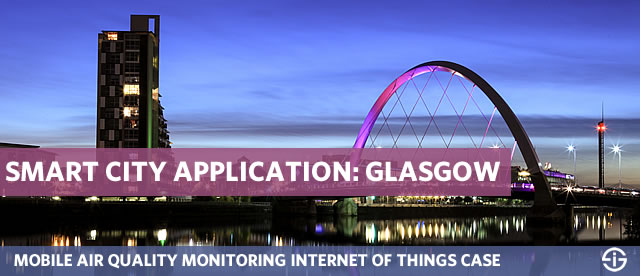
Glasgow smart city: IoT connectivity infrastructure
Before you can, for instance, decide to turn specific parts of an urban area into low emission zones as some cities do or ban traffic and/or specific pollution sources in other parts, you need to know the degree of air pollution.
This is a highly dynamic given in certain cities and there can be major differences between areas in one and the same urban zone, as well as depending on factors such as time of the day or year, particular events, the weather and so forth. This is where the Internet of Things comes in and where we see that several smart city projects are set up to achieve optimal air quality monitoring.
An example of a city which runs such a project is smart city Glasgow (Scotland). Glasgow is quite advanced when it boils down to the Internet of Things already. A consortium, consisting of Stream Technologies, Semtech (founder of the LoRa Alliance where LoRaWAN IoT connectivity players are gathered), Boston Networks and CENSIS rolled out a wireless IoT network in collaboration with three local universities.
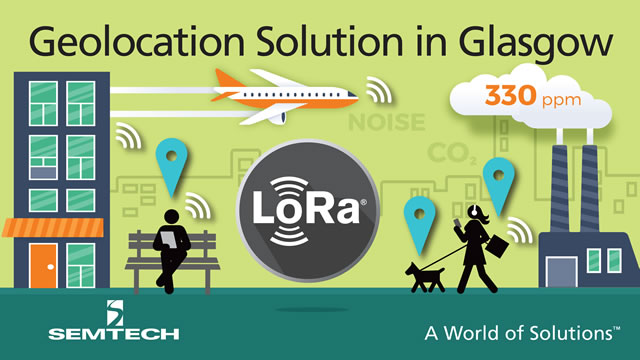
Monitoring air quality with IoT – the mobile way
On top of the developments and use of devices such as pollution sensors, the network also is used for, among others, intelligent transport.
Glasgow, like many cities who are working to improve air quality, which is sometimes a legal obligation, has a number of static stations to monitor air quality data. As they are static and not cheap, de facto only a restricted number is used. Often this means that you can’t monitor air pollution and various sets of pollutants across the whole urban area, which results in gaps.
The answer to that challenge in the case of Glasgow: add vehicles with sensors to control air quality on top of the static stations in a project called ‘sensing the city’.
The project, an initiative by CENSIS, the Scottish Innovation Centre for Sensor and Imaging Systems, which was also key in the mentioned LoRaWAN project, was conducted in collaboration with the University of Strathclyde and Spain-based Libelium that has a range of solutions for IoT, among others for air quality monitoring and a range of smart city solutions.
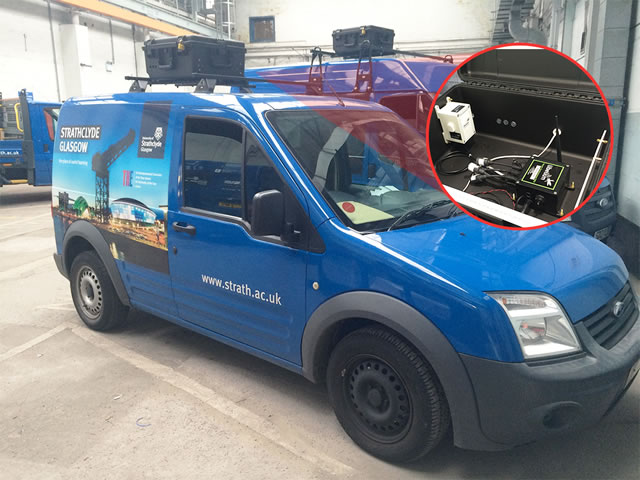
Solution and results
As LPWAN technologies such as LoRaWAN or Sigfox are not designed for such highly mobile conditions where air quality monitoring possibilities employ vehicles and transport systems for dynamic sensing, the solution works with, among others 3G.
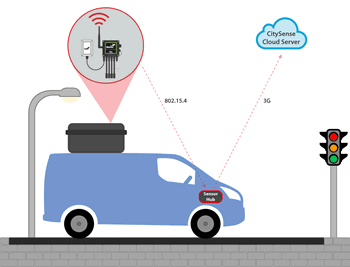
The components of the mobile air quality monitoring project in Glasgow:
- Libelium’s Waspmote Plug & Sense! Smart Environment PRO and several Particle Matter dust sensors, which enable monitoring of Carbon Monoxide (CO), Particulate Matter (PM), temperature, humidity, pressure, Nitric Oxide (NO), Nitric Dioxide (NO²), Ozone (O³) and position, are placed in a box.
- The information which is monitored by these devices and platforms is sent to a sensor hub, placed in the vehicle’s glove box through 802.15.4. It consists of Raspberry Pi2, a GPS Antenna and Zigbee.
- The information then gets sent via 3G to the cloud and is visualized in the CitySense application, which is developed by CENSIS and based on the Microsoft Azure IoT platform.
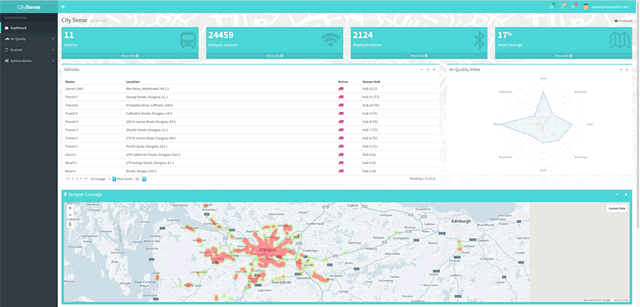
The results:
A cost-efficient, mobile and reliable air quality monitoring system, taking into account various parameters and the dynamics of urban areas, and offering real-time data and flexibility to make Glasgow’s air pollution combating initiatives more informed and complete.
Consulted resources:
- CENSIS (Glasgow pioneers IoT connectivity with new LoRa network).
- WHO (Global urban air pollution trends May 2016).
- The University of Strathclyde Institute for Future Cities.
- Libelium (Mobile monitoring system: Vehicles with sensors to control air quality in Glasgow, December 2016).
Disclaimer: we are not associated with any of the mentioned parties. Top image: Shutterstock – Copyright: fujji – All other images are the property of their respective mentioned owners.

